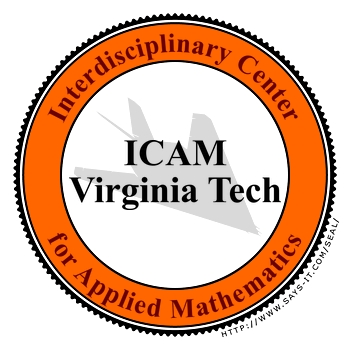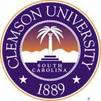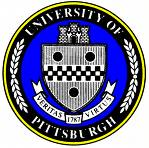




Here are abstracts for the talks given at the Clemson/Pitt/UTK/VT Graduate/Post Graduate Conference, 21 February 2009.
Species augmentation increases a declining or threatened population by adding individuals from captive-bred or stable, wild populations. We have developed a differential equation model and an optimal control formulation for the continuous time augmentation of a general declining population. We characterize the optimal control and show numerical results for scenarios of different illustrative parameter sets. This is a first step towards a general theory of population augmentation, which will need to account for the complexities inherent in many conservation biology applications.
We will investigate parameter identification and parameter validation for models described by delay differential equations where only a small amount of data can be collected. To estimate the parameter, one can use a least squares estimator or a maximum likelihood estimator, but the corresponding statistical validation methods can not be used. In order to say something about the quality of the estimate, we will use bounded error parameter identification.
A complete analysis of convergence and rates of convergence of finite element approximations of the Navier-Stokes-alpha (NS-alpha) regularization of the NSE, under a zero-divergence constraint on the velocity, to the true solution of the NSE is discussed, under no-slip boundary conditions. 2D experiments are shown, verifying convergence and predicted rates of convergence. Furthermore, in the case of flow over a step the NS-alpha model is shown to resolve vortex separation in the recirculation zone.
A new constitutive equation will be presented to illustrate the damage evolution process in ligaments. The model is formulated by accounting for the ligament's fibrous structure. Damage is defined as a reduction in collagen fiber stiffness and occurs at different stretches. The model predictions are compared with the available stress-strain data in the biomechanics literature that evaluate damage produced by subfailure stretches in rat medial collateral ligaments.
Difficulty arises in rigid multibody dynamics for convex polyhedral bodies when noninterpenetration constraints are enforced. To calculate normal vectors at contact, it is necessary to determine the amount of penetration, when it exists. The classical computation of the depth of penetration when applied to convex polyhedral bodies is inefficient. We will construct a signed distance function and implement it for use with a method for achieving geometrical constraint stabilization for a linear-complementarity-based time-stepping scheme for rigid multibody dynamics with joints, contact, and friction which, before now, was not equipped to handle polyhedral bodies.
Given a compact operator G:X->Y, I consider the ill-posed problem: given y, solve A x = y (approximately). I will discuss iterated Tikhonov regularization as a way to stabilize this inherently unstable problem. The power of iterated Tikhonov regularization is that it permits a more conservative selection of the regularization parameter than associated with traditional Tikhonov regularization, with updating to recover accuracy. I will show that the updated approximations approach the true, noise-free solution and propose a stopping criterion based on the minimization of a "noise-free" functional. Moreover, I will show how to compute the formally defined parameter sensitivity which provides information pertaining to the reliability of our approximation.
The prediction of the noise generated by turbulence has been of great importance in acoustics. In 1951 James Lighthill introduced the analogy for describing the acoustic wave propagation caused by turbulent flows. In this talk, the model problem using Lighthill analogy will be presented with the Finite Element Method scheme for this problem. Error estimates will be given.
We will look at a benchmark problem in parameter identification for biological systems. We will consider current methods for this problem and then examine the advantages of an iterated Tikhonov regularization, which can provide a superior solution.
We consider a system which evolves in time, but for which the initial and final conditions are not prescribed. It is desired to minimize a quantity that can be regarded as the abstract arc length of the evolution curve. We discuss numerical methods for such a problem, and show the mesh independence of some of our results.
We propose a unified framework for filtering and smoothing problems for distributed parameter systems where mobile sensors provide system measurements. Examples of such problems include detecting the source of a biological or chemical contaminant or locating an acoustic source by a micro air vehicle. Mathematically, we couple hyperbolic PDE's for the system with ODE's that describe the motion of the detectors. To achieve real time response, we employ controller and model reduction.
I will discuss a major potential inaccuracy that can occur when computing the incompressible Navier-Stokes equations with the rotational form of the nonlinearity, and how to overcome its effect. For some simulations, it is advantageous to use the rotational form for improvements in conservation laws adherence (helicity) or to employ certain robust preconditioners. However, for some flows, the use of the rotational form implicitly adds sufficient complexity to the new dynamic pressure to make velocity error on the order of Reynolds number * pressure error. Through numerical analysis and computations, we show that by adding grad-div stabilization to the scheme, we can greatly reduce the effect of the pressure error on the velocity error, allowing for accurate computations.
We present the construction of a standardized adjoint of the Harvard's global GEOS-Chem model and EPA's regional air quality model CMAQ. The construction of adjoint models is a difficult, labor intensive, and error prone task. However, 4D-variational or adjoint-based data assimilation provides a powerful means for integrating observations with models to estimate an optimal atmospheric state and to characterize the sensitivity of that state to the processes controlling it. The standardized adjoint framework discussed here will allow the world-wide community of GEOS-Chem and CMAQ users to perform sensitivity analyses and 4-D variational data assimilation for initial tracer concentrations, boundary conditions, and emission sources. We also present performance improvements in this adjoint model in terms of memory usage and speed. With the parallelization of each science process adjoint subroutine and sub-optimal combination of checkpoints and recalculations, the improved adjoint model is as efficient as the forward GEOS-Chem model. It is an irony though to use such models to analyse atmospheric tracer and aerosol concentrations by running these on power hungry supercomputers which have humongous carbon footprints. We took the first initiative of running these large scale scientific models on a desktop in a hybrid fashion using multi-core Central Processing Units (CPUs) and high performance general purpose Graphics Processing Units (GPGPUs). These improvements are going to add ample scientific value to the way we analyze physical and chemical dynamics of the earth's atmosphere.
I will present a viscoelastic model for parallel-fibered collageneous tissues, such as ligaments and tendons, which describes their mechanical behavior during preconditioning. In the model formulation, the collagen fibers are assumed to be parallel to the loading direction, have different waviness, and exhibit linear elastic behavior after becoming straight under tension. The proteoglycan-rich matrix, in which the collagen fibers are embedded, is assumed to be viscoelastic, undergo damage, and produce tissues's softening. The model has been shown to have a good qualitative agreement with published experimental data.
A number of interesting control applications lead to large matrix equations with sparse, yet high rank matrices. For example, the first iteration of a Kleinman-Newton solver for the Algebraic Riccati equations arising from discretization of a PDE requires solution of a Lyapunov equations with sparse and high rank matrices. We discuss a technique based on recent works by Benner and by Singler that reformulate Lyapunov and some Riccati equations as large scale differential equations where model reduction methods, such as the proper orthogonal decomposition, can be applied. Our numerical results show substantial computational savings over standard numerical libraries for control problems requiring high order discretizations.
We study the controllability of the Schnakenberg equation. This is a Turing-type reaction-diffusion system that models the emergence of pattern formation. We prove the existence of parameters that in finite time T drive the state variables to a given pattern, provided that the initial conditions are close to this target.
We introduce improved reduced-order models for turbulent flows. These models are inspired from successful methodologies in large eddy simulation, such as eddy viscosity, applied to the proper orthogonal decomposition of the flows. We also present a thorough numerical analysis for the discretization of these models.
An optimal control harvesting problem for a population modeled by an integrodifference equation model is considered. The proportion to be harvested is taken to be the control. The harvesting occurs after the growth of the population but before the dispersal. The goal is to find the optimal harvesting control to maximize the profit. Existence and characterization of the optimal control are established.
You can return to the ICAM Graduate Conference web page.